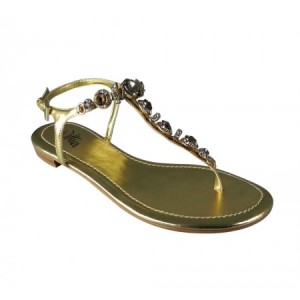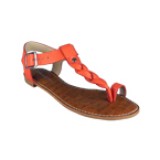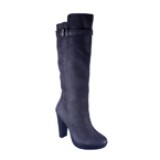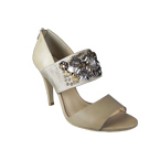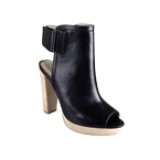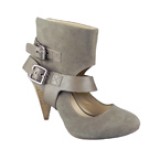I have to confess, I was away from the blog and was out shopping in the Sales. It’s back to school here and my children need shoes etc. and there are still fabulous bargains at the last days of the Sales. Promise, I was able to pick up some juicy lessons for preparing to Trade while at it! Hehehe
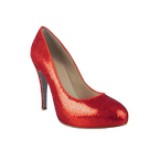 With low prices giving you “more bang for your buck”, we all look forward to buying the things we want and “saving money” on Sales. As a seasoned shopper, you probably know that this is “temporary” and will seize the opportunity. And as a bonus to us girls – we can definitely use shopping skills in the investment world! Yes, investments go on Sale too or ride a hot trend. It’s not a secret but few people would be brave (or knowledgeable) buying on these “Sales Season”at the financial markets , when stock prices go down and company valuations are attractive or “cheap”. Then, situations change and some markets could get attractive again due to growth prospects and markets “rally” or creep up gradually in cautious optimism. Yet again, there are times when there is a split in perspective of growth which affects risk appetite, some are positive about the market, others could find less reason to risk, in this case, there is a see-sawing or sideways movement in the market. So before doing any investing, you need to “know the different conditions” you could find yourself in, and know that each condition warrant different ways of thinking to make money. Please, please, take that as a Buy 1 Take 1 advise! It breaks my heart everytime I read about this or that “secret” or “strategy” that is promoted at full blast without equal emphasis to when they are suitable. No way! It’s like going out in stillettos everywhere! Can not! Think, when going out to the gym or a walk, sport shoes are essential to get the best benefits or protection. In the same way, for every market condition, there are appropriate winning solutions.
With low prices giving you “more bang for your buck”, we all look forward to buying the things we want and “saving money” on Sales. As a seasoned shopper, you probably know that this is “temporary” and will seize the opportunity. And as a bonus to us girls – we can definitely use shopping skills in the investment world! Yes, investments go on Sale too or ride a hot trend. It’s not a secret but few people would be brave (or knowledgeable) buying on these “Sales Season”at the financial markets , when stock prices go down and company valuations are attractive or “cheap”. Then, situations change and some markets could get attractive again due to growth prospects and markets “rally” or creep up gradually in cautious optimism. Yet again, there are times when there is a split in perspective of growth which affects risk appetite, some are positive about the market, others could find less reason to risk, in this case, there is a see-sawing or sideways movement in the market. So before doing any investing, you need to “know the different conditions” you could find yourself in, and know that each condition warrant different ways of thinking to make money. Please, please, take that as a Buy 1 Take 1 advise! It breaks my heart everytime I read about this or that “secret” or “strategy” that is promoted at full blast without equal emphasis to when they are suitable. No way! It’s like going out in stillettos everywhere! Can not! Think, when going out to the gym or a walk, sport shoes are essential to get the best benefits or protection. In the same way, for every market condition, there are appropriate winning solutions.
Bulls, Bears, … and Chickens
You would come across these “animals” in the financial markets, though I have to warn you wouldn’t read “chicken” in financial materials elsewhere. I just thought I’d add it in here because we all know not everything goes Up or Down, is Black or White, Left or Right. Do you hear what I’m saying? (No? OK, just read on…)
Bears – they say bears tear “down” their enemy or prey with their paws hence it’s used to describe investors who have a negative view of the market, more inclined to dump their holdings or keen to SELL, and push prices DOWN. When a lot of people have this negative view, we have a “Bear market”, meaning the market is on a Down trend.
Bulls — the bull on the other hand would fight with it’s horns going upward, hence its used to describe investors who have a positive view of the market, more inclined to add to their holdings and BUY pushing prices UP. Bull market then means the market is going on an Up trend.
Chickens –well in common language we say someone is a “chicken” or “chickened out” when tentative, unsure or quick to change his/her mind. In financial markets, when there is a lot of uncertainty, this causes prices to move or swing more (become volatile), therefore people are quick to take profit or don’t want to risk their money for longer periods in case the market reverses. There is a tug of war between the people who are positive or negative about the market , hence the market would move Sideways.
It’s worth repeating here and I hope you realize the importance of investing with these market conditions in mind– what are you going to invest on or trade that will still be profitable in Up, Down, or Sideways market. Usually this is the more “liquid” assets or markets. “Liquid” means how easy you can get in or out of an investment. Also in addition to what you invest on, is what strategy you can apply to profit from the market moves or be protected.
Alright, so what Strategies could work given these Market conditions. I will just mention some here and will provide more detailed explanations in an Options section later or you can look them up yourself in related references.
Bull Market – this is the easiest market to trade, usually by buying UP trending assets
- Buy and Hold – basically, with this strategy, you buy an investment and intend to keep it for a long time. Not a bad strategy if you bought very cheap say when the stock is newly issued or at the bottom of the bear market if you were fortunate /skilful enough to have done so. The Motley Fool Foolish Four approach is an example of this strategy where they recommend buying Dow30 stocks and holding for a year. Just remember you still need to set a “Stop Loss” or a limit to tell you when you will get out of the investment, the Oxford Club newsletter recommends to set Stop at 25% off the highest price.
- Buying Call Options – I explained this briefly in the article “ Learn to Last : Part 3 – Financially”, in using this strategy, you enter into a contract to have the right to Buy above a price on a timeframe that you choose, which is convenient and minimize your risk not needing to commit the whole amount of share price but pay only a small amount for the contract and let you participate in the upward move of the investment (Options can be used in stocks, as well as FOREX)
Bear Market – need to be careful and not a lot of assets can be traded in this Down trending market
- Short-selling – basically with this strategy, you Sell first at a High price and then Buy later at a Lower price. The broker will facilitate the transaction by borrowing the asset from another owner. During the height of the Financial Crisis, short-selling was not allowed by the US and Australian regulators (the government), in an effort to keep the markets from falling too much.
- Buying Put Options – I also explained this briefly in the article “ Learn to Last : Financially”. in using this strategy, you enter into a contract to have the right to SELL below a price on a timeframe that you choose. As in the bullish strategy, this is convenient and minimize your risk. In this strategy you have the right to sell and you don’t even have to own it first hand because you are just transacting on a contract which gives you the right. Say a stock is worth $50, with a Put Option, if price goes down to $47 the move is in your favor, you can profit by selling your Put Option which has a higher value now, or when you want to actually exercise your right to sell, you can buy it at the price at that time, the $47, you profit from the down move.
With Options, you pay only a small amount for the contract and let you participate in the move of the investment (Options can be used in stocks, as well as FOREX).
Sideways Market – the market moves in this market does not last long. One day, the market could go up 200points, then the next day, it goes down 150 points depending on say earnings or economic reports. Sharp moves can happen in different timeframes and a profit can quickly turn to a loss, as a private investor, remember that you need not get in when the conditions are too choppy.
- Straddles – this is an Options strategy that is a combination of Buying Put (for Down move) and Call (for Up move) at the same Strike price. For example, a stock is priced at $15 and you think the price could have a massive move up or down from this price, you bought Put and Call options, then the price moved to $25, your Call option will be very profitable (say profit of $10) while you lose on your Put option (loss of $6), you then make $4.
- There are other Options strategy that could work but would require careful and lengthy explanation so I will just mention, other strategies that could work in Sideways market is Spreading, Calendar Spread, Covered Call Writing.
And if only to emphasize this lesson of knowing the conditions and best strategy that go with it, I will give you another example. Remember “Dewi” my friend who wants to learn about trading? I suggested to her to do her research, gather information (check out “The Right Foundation”) and she sent me back an article in one of the finance websites she found. The author recommended to “Buy shares at regular intervals (monthly or every 2 months), if share prices are down and you buy the same shares, you would bring down the average price of the shares” — this strategy is called “Dollar Cost Averaging”, which works fine in a Bull Market, but if every month you buy shares in a Bear Market, it will become Dollar Cost Haemorrhaging. Why? Because you keep buying shares that do not go up and your original investment is at a loss, then what’s the point? You’d just keep on bleeding and eventually give up on it.
So remember to know the different conditions that could happen in the market and only use a strategy that will perform in those conditions. And yes, it’s like sandals to keep cool for hot Summers, then thick, cozy boots to protect you from cold Winters… bet I didn’t have to tell you that!




